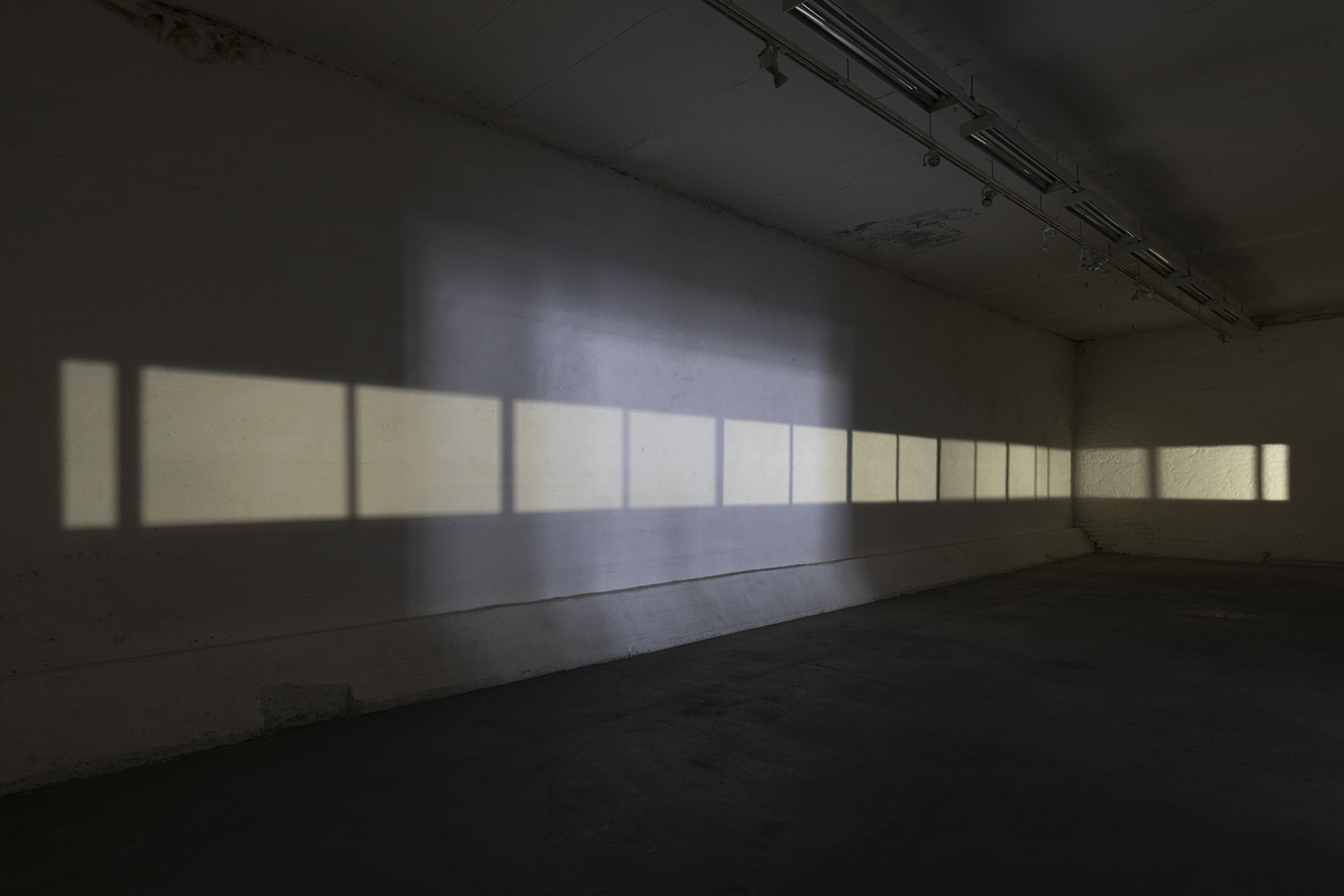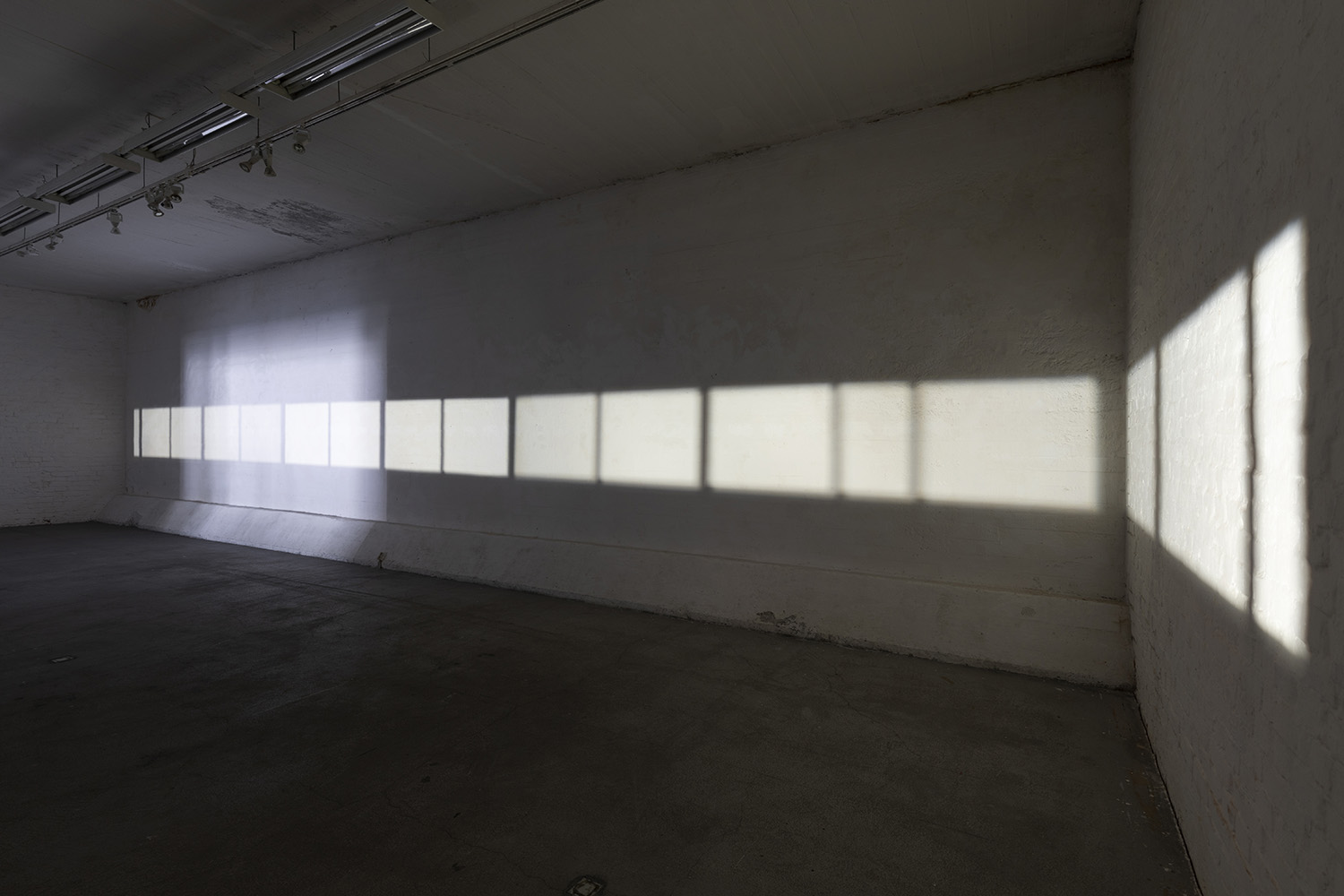

Photos: Anna Autio
Long Manifesto 1:1, 2023
Projection with Kodak carousel slide projectors as light source
Actual scale of the horizontal windows on the north west side of Villa Savoye
Vertical hierarchies were considered to be dominant in the structures of modernism, despite the fact that they were supported by horizontal foundations. Horizontality has maintained its authority undetected because of its self-imposed hight restriction. However, continuous attempts to deconstruct vertical hierarchies have been revealing more complex orders of horizontality.
The famous argument between Auguste Perret and Le Corbusier on the window formations —Perret to be vertical and Le Corbusier to be horizontal— was an allegory of paradigm shift in modernism. This argument of form and function, which developed into the question of which of two would let more light into a room, has been written as if Le Corbusier’s ‘triumph’ over his former mentor. What did he actually win, then?
Le Corbusier’s masterpiece, Villa Savoye, was designated an official French historical monument after it was completed and was almost never properly lived as intended. In between, it was abandoned twice: first by the Savoyes during the World War II, and then by the soldiers, both Germans and Americans, after the World War II. Bernard Tschumi, who visited the ruin of the Savoye, wrote how he was moved by the villa in its state of vandalism and disrepair.
In the black and white pictures of the Savoye as a ruin, the horizontal windows —one of Le Corbusier’s architectural manifestos—are particularly emphasised. They look like slightly opened eyes, whose vision is difficult to discern. This may as well have been the result of the awkward window shapes in which the form supersedes its function, as Perret once pointed at. The pre-determined monument was set to pull emotional trigger through abandonment, as Tschumi had it written.